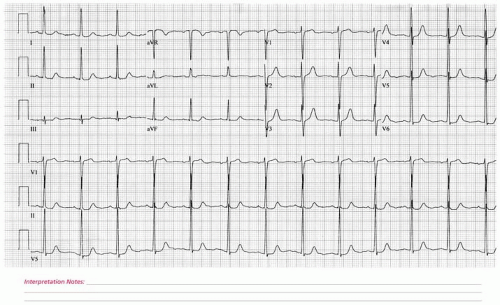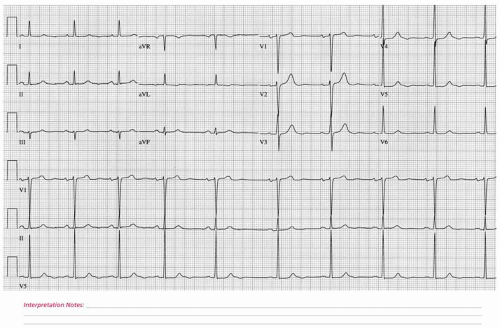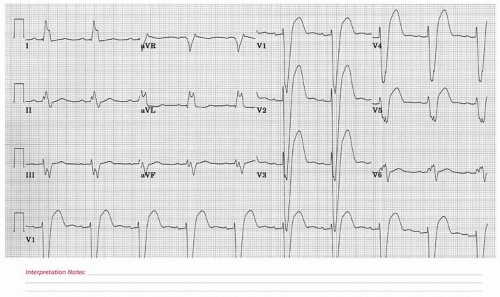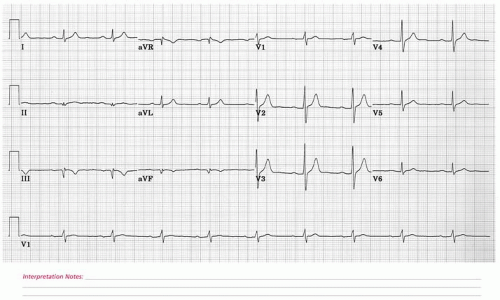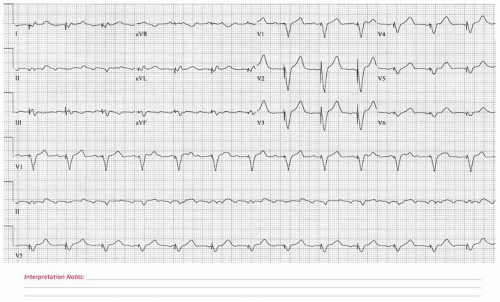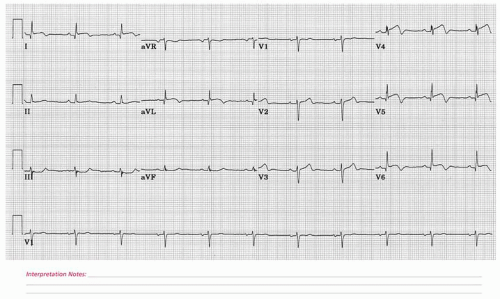Level 1
 ECG 2 A 34-year-old male with congenital bicuspid aortic valve disease and severe aortic valve insufficiency. |
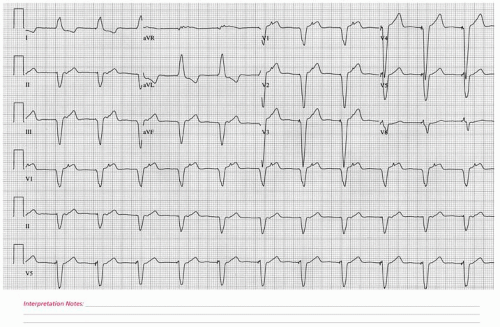 ECG 8 A 74-year-old female with recent pacemaker placement and postprocedure persistent shortness of breath. |
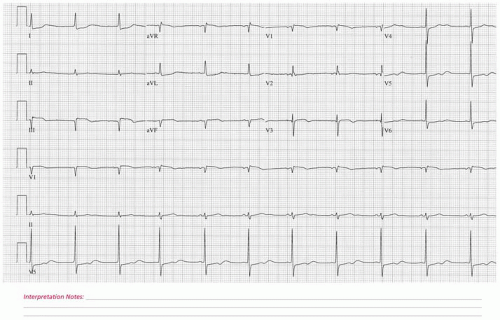 ECG 11 A 66-year-old male with known coronary artery disease and a prior coronary artery bypass operation. He has been experiencing 2 hours of severe chest pain and hypotension. |
 ECG 12 A 40-year-old male with renal failure secondary to chronic pyelonephritis awaiting renal transplant. His calcium level at the time of this electrocardiogram was greater than 11 mg/dL. |
 ECG 23 A 68-year-old male with a history of coronary artery disease who experienced a myocardial infarction 3 years previously. The patient returns for outpatient cardiovascular medicine follow-up. |
 ECG 26 A 78-year-old female who presented 24 hours earlier with severe anterior chest discomfort consistent with an acute myocardial infarction. |
 ECG 32 A 62-year-old female admitted to the hospital with suspected unstable angina. She has no known coronary artery disease. |
 ECG 38 A 78-year-old female with long-standing poorly controlled hypertension and nonischemic left ventricular systolic dysfunction. |
 ECG 41 A 78-year-old female with intermittent lightheadedness and near fainting who presented to the emergency room with profound fatigue. |
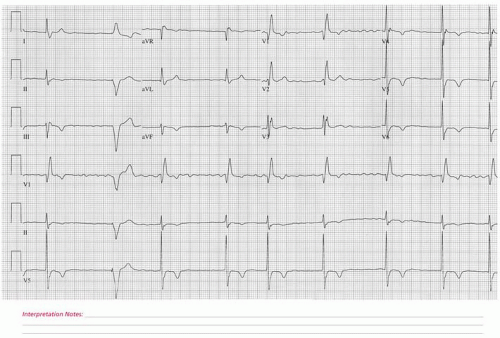 ECG 44 A 79-year-old male with recurrent syncope, status post recent permanent pacemaker implantation. |
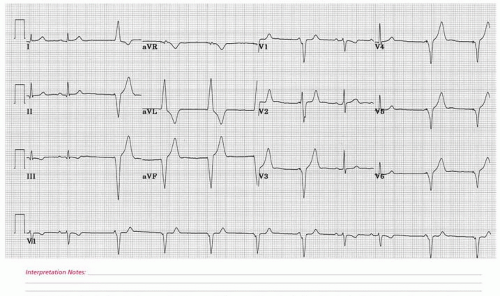 ECG 54 A 37-year-old male admitted to the coronary intensive care unit with syncope in the setting of advanced sinus bradycardia. The patient subsequently underwent permanent pacemaker implantation. |
 ECG 56 A 50-year-old male with known coronary artery disease and a prior myocardial infarction who is postoperative day 1 following coronary artery bypass grafting surgery. |
 ECG 58 A 72-year-old female with a history of thyrotoxicosis complicated by atrial dysrhythmias seen in cardiovascular medicine outpatient follow-up. She was recently hospitalized for a transesophageal echocardiogram-guided cardioversion that was successful in restoring normal sinus rhythm. Unfortunately, shortly thereafter, her atrial dysrhythmia recurred. She is now seen to discuss her near-future management options.
Stay updated, free articles. Join our Telegram channel
Full access? Get Clinical Tree
 Get Clinical Tree app for offline access
Get Clinical Tree app for offline access
Get Clinical Tree app for offline access

|





